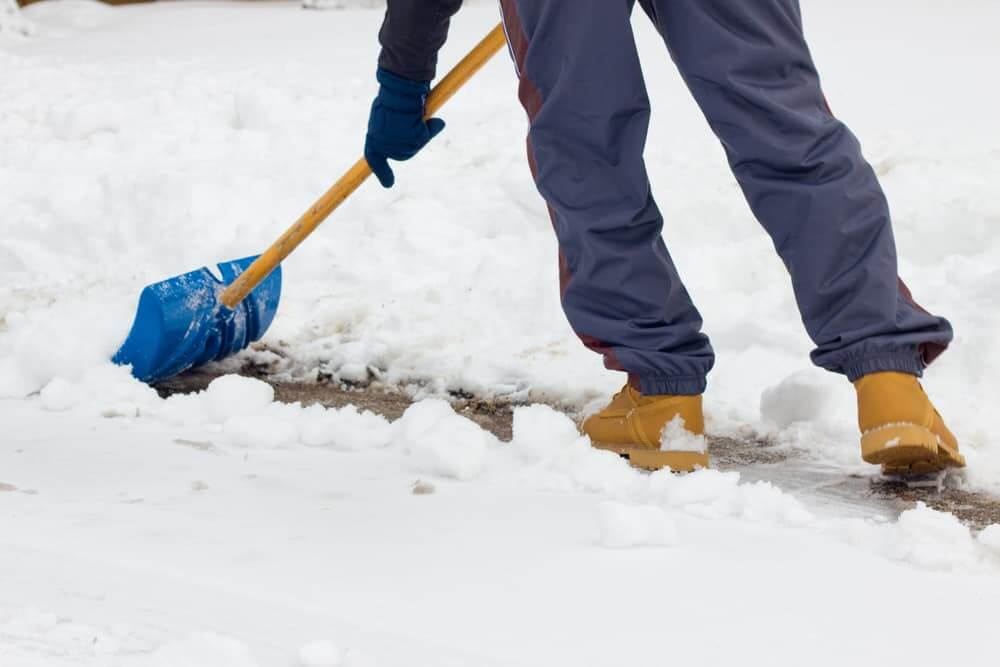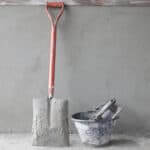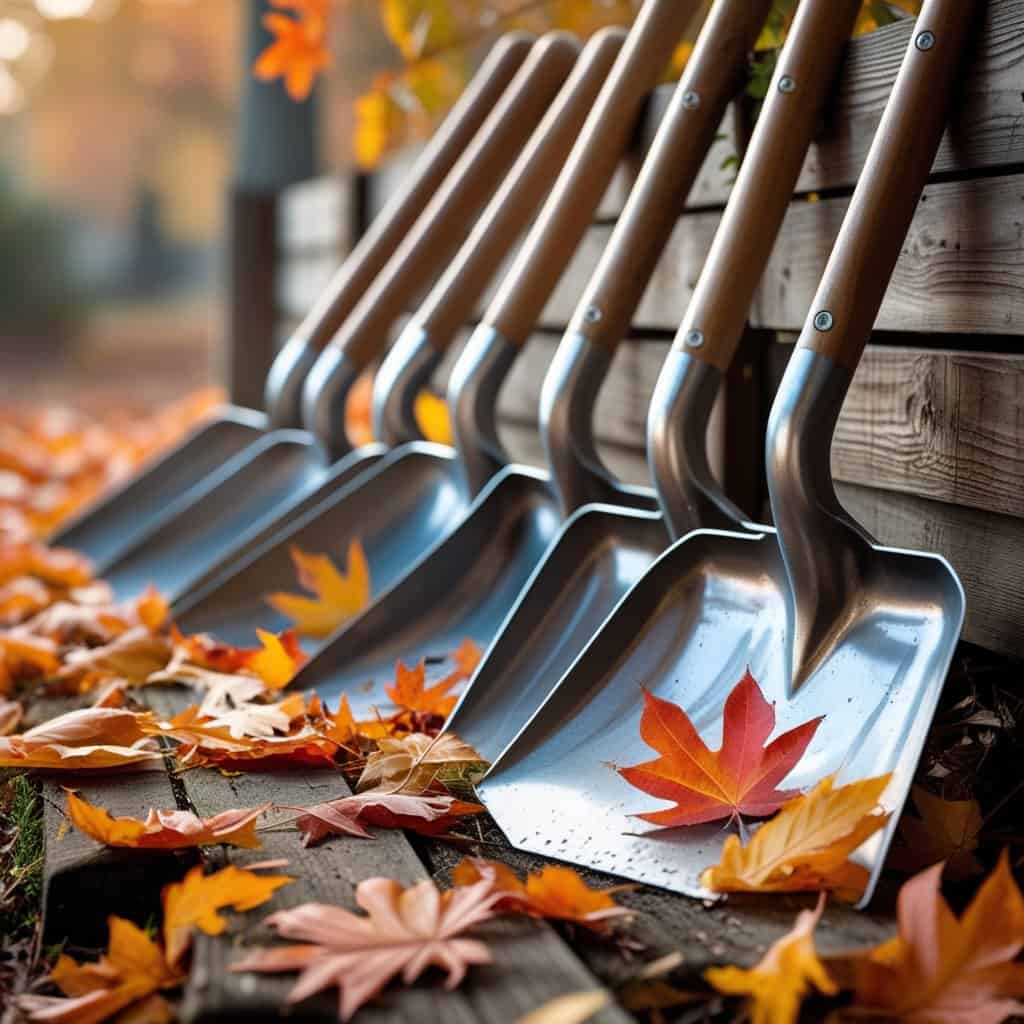Shoveling the snow at night can be dangerous and challenging, depending on the temperature and the amount of snowfall accumulated during the day. The best time of day to shovel your driveway is first thing in the morning or in intervals as it snows, keeping it from building up and removing it while still light and fluffy.
Though not reported as a shoveling incident, many injuries and deaths are associated with shoveling snow each year. What factors make this task so dangerous, and what can you do to get the job done safely?
Table of Contents
Shoveling Snow at Night
While there are some benefits to shoveling snow at night, like the fact it hasn’t had a chance to melt, turning into heavy snow piles and ice, there are many more reasons you should resist the temptation.
1. The Temperature is Much Colder at Night
Winter weather and time of day does play a role when shoveling. When the sun is not out, it is definelty colder potentially creating an unsafe work situation.
2. Shoveling at Night Allows For All Day Snowfall to Accumulate
Snow can become very heavy quickly, and the longer it falls, the more it builds. Choosing to shovel at the end of the day, after the snow has fallen for hours, will result in more work for you. It is much easier on your body to shovel three-light loads throughout the day than one heavy load.
3. Low Visibility
Visibility is low in the middle of a snowstorm or heavy flurry. Then add fewer daylight hours in winter, and low visibility happens for a more extended period. Combine clearing snow and darkness of night and your risk of being in a hazardous situation, the chance of being struck by a car, or hard-to-see moments if something were to happen increases.
The Best Time to Shovel Snow
The best time to shovel snow is late morning or early afternoon and in intervals or mini sessions, as we like to call them throughout the day as the snow continues to fall. You will also hear that going out to shovel the day after a big storm is one of the most dangerous times to clear your path.
Before shoveling away a significant snowfall, there are many tips to consider, keeping you safe and from getting in over your head.
Utilize the Sunlight
Eliminate some of the work by letting the sun assist you. Wait for the temperatures to warm up a bit and the sun to come out and melt away some of the mess. The sun will reduce the amount of snow you have to shovel, although it will add some extra weight to what is left as the snow becomes wetter and heavier then. If you shovel after a heavy melting session, take caution, and be prepared to give your arms, quads, and stomach a good workout.
Use The Weather To Your Advantage
On a heavy snow day, take advantage of the day and sunny weather, and clear the snow multiple times throughout the day. Although shoveling numerous times a day may feel like you are creating more work for yourself, you are making the job much easier by reducing the weight you lift. In turn, you are getting your shoveling completed quicker and reducing potential stress to your heart.
Shovel the Snow in the Morning
Taking care of your snow shoveling first thing in the morning is going to give you a chance to remove the piles before the snow has a chance to turn melt or turn into ice, reducing the likelihood you or someone else may slip and fall.
Consider This When Shoveling Snow
It might sound a little out there that shoveling snow is a dangerous task, but the truth is that people can be seriously hurt if they are not careful.
Here is a list of things that will help you shovel the snow more efficiently and protect you from frostbite, hypothermia, muscle fatigue, slips, and falls.
1. Dress Appropriately
Even if you only plan on spending a short amount of time outside, always dress for the weather. That includes a winter coat, a hat to keep your body temperature regulated, a scarf or balaclava to protect your face, boots to keep your feet warm and dry, and gloves to protect your fingers.
Even if you don’t feel cold when shoveling without proper protection, your body can still react, and you could be causing yourself harm without even knowing it.
2. Buy a Quality Shovel
When purchasing a snow shovel, consider a lighter plastic or carbon fiber option and look for ergonomics in the shovel’s design. A quality shovel will keep you from injuring your back when pushing or lifting the snow.
Check out our guide Choosing the Best Shovel for you? to assist you in buying a quality shovel or learn about the different types of snow shovels available in our guide What are the Different Types of Snow Shovels
3. Shovel in Sections
While we already discussed the benefits of shoveling in intervals to keep the workload more manageable, shoveling the snow in sections is also helpful. For example, try clearing your driveway a third or half at a time, rotating sections every time you go out.
5. Know Your Limits, Listen To Your Body
We all want to get the job done, but it is vital to take breaks for the good of your body and to prevent harmful situations. Shoveling a large area takes time, energy, and strength. How long the gap is will depend on your fitness level. If you are not that fit, try shoveling for five minutes and then taking a ten-minute or more extended break if needed before you begin shoveling again.
If you are recovering from an illness, feel unwell, or suffer from an injury, call in a favor, phone a friend, or pay a company to take care of the task. There are no benefits to placing yourself in a situation that can worsen your already compromised health.
Final Thoughts
The best time to shovel snow ultimately is in the morning and intermittently throughout the day. However, some factors influence the best time of day to shovel – the snowfall rate, the weight of the snow, and how you are feeling. Although it is a chore many of us have to tackle during the winter months, be safe and shovel when the conditions are in your favor.






